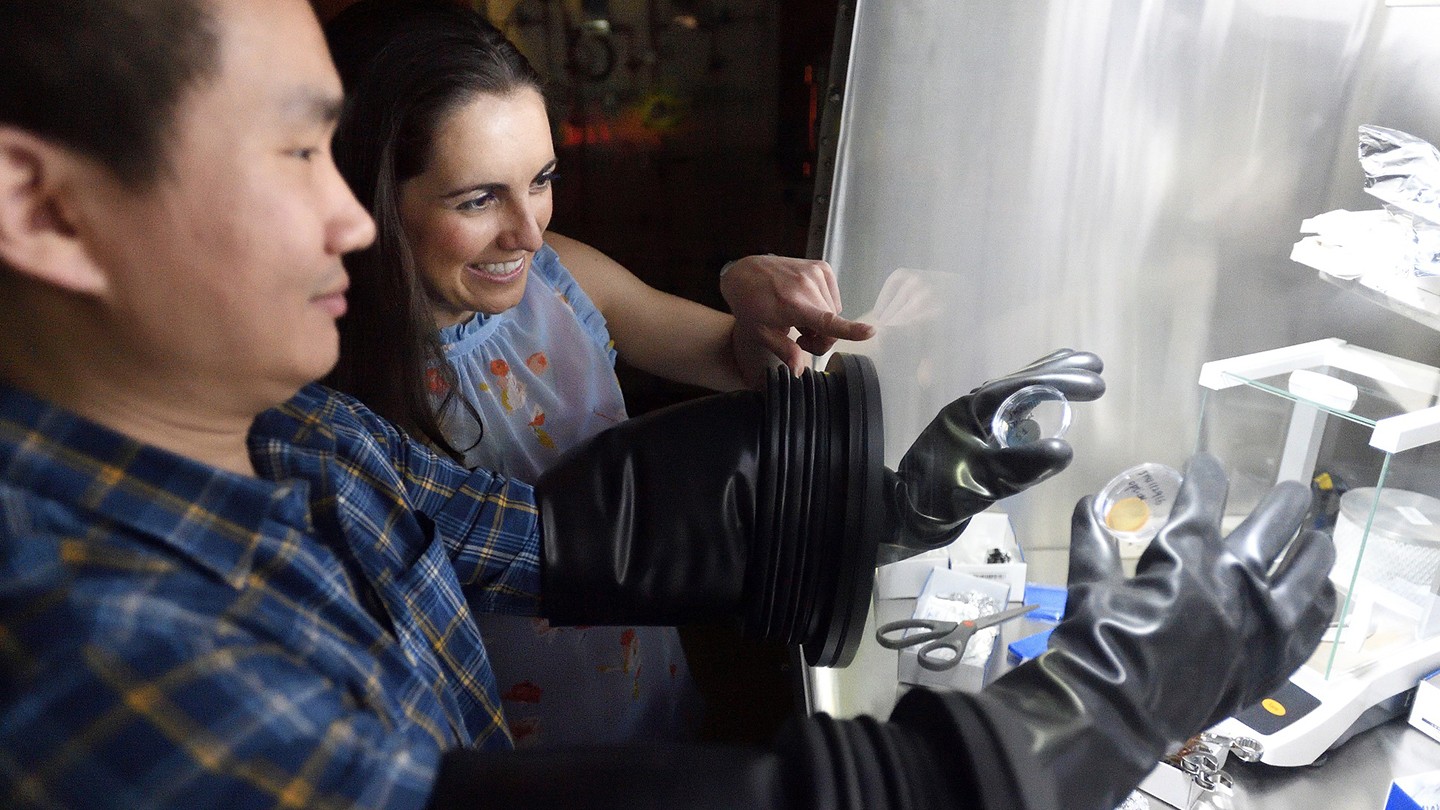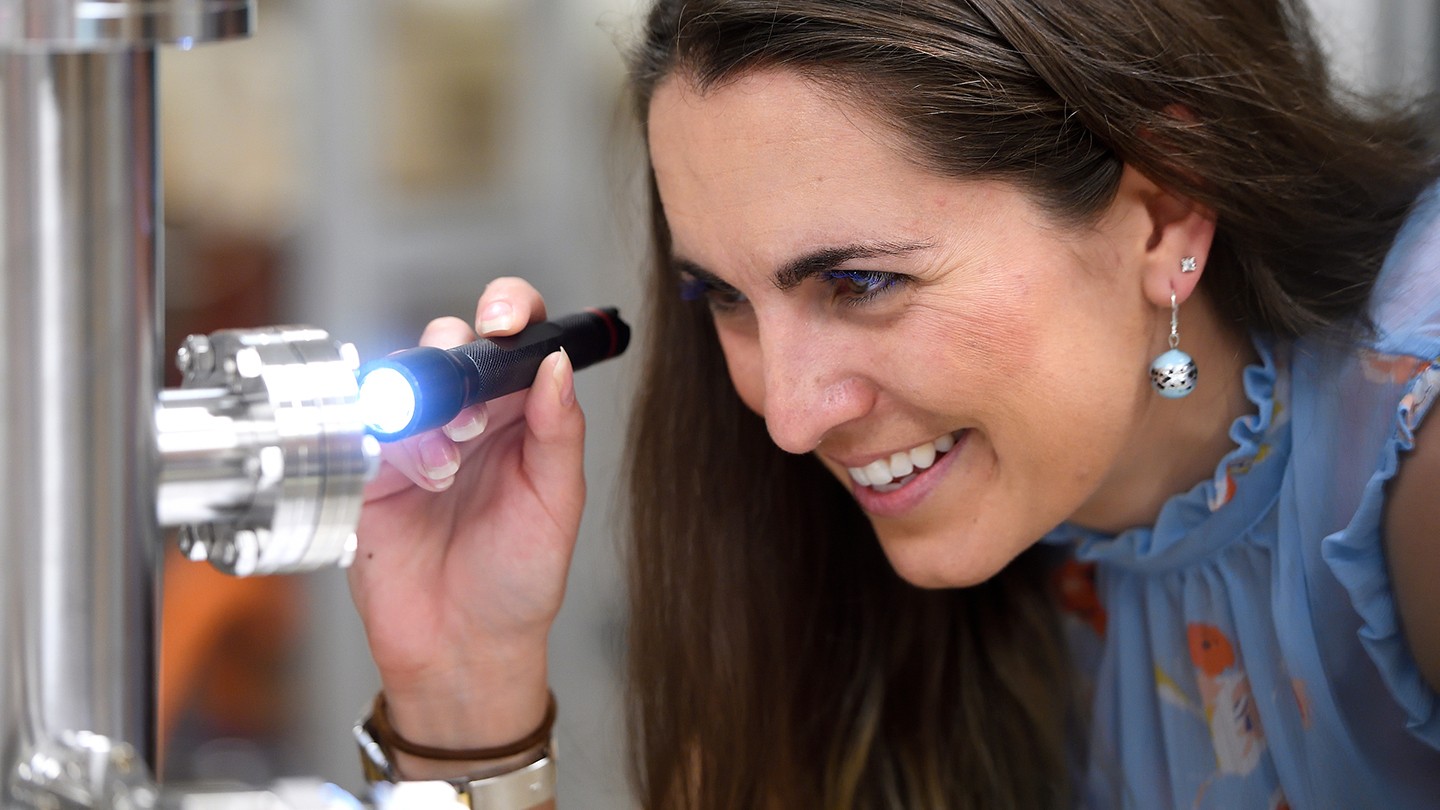Alien Atmospheres Cooked Up in Lab May Aid Exoplanet Search

While telescopes in space can scan the sky without interference from Earth's clouds, they still run into problems from hazes on other planets. To get around foggy skies, researchers have simulated haze formation in exoplanet atmospheres in hopes of better understanding future observations made with NASA's James Webb Space Telescope.
"One of the reasons why we're starting to do this work is to understand if having a haze layer on these planets would make them more or less habitable," lead author Sarah Hörst said in a statement. Hörst, a researcher at Johns Hopkins University in Maryland, and her team varied the levels of gases in their computer model to build nine simulated planets. Then, in the lab, the researchers created the combinations of particles predicted by that model in an effort to determine which mixtures of gas were most likely to form hazes. [NASA's James Webb Space Telescope Arrives in California for Final Testing]
Now you haze it — now you don't
By turning the most powerful telescopes toward exoplanets, astronomers can determine what gases make up those worlds' atmospheres. NASA's Hubble Space Telescope and ground-based instruments have already provided some hints about other worlds, and the upcoming James Webb Space Telescope (JWST) is expected to probe even deeper.
When solid particles are suspended in the gas of an atmosphere, they can form a haze that affects how light interacts with the gas, interfering with telescope observations. Specifically, the haze mutes the wavelengths of light that telescopes can pick up and which researchers use to identify the atmosphere.
Hörst and her team used computer models to assemble the atmospheres for super-Earths or mini-Neptunes, types of worlds not found in our solar system. Super-Earths are rocky worlds larger than Earth, while mini-Neptunes are miniature versions of the gas giants in this solar system. The models mixed levels of three dominant gases — carbon dioxide, hydrogen and gaseous water — and four other gases present to a lower degree in the models: helium, carbon monoxide, methane and nitrogen. Then, the researchers varied the mixes' temperatures to produce the quantities observed in the nine simulated worlds.
After combining the gases in a chamber and heating them, Hörst and her team sent the mixtures flowing through a plasma discharge to initiate chemical reactions. The flow of charged particles broke up the gas molecules and caused them to recombine with one another to make new things; this allowed the researchers to see which atmospheres created hazes.
"Sometimes, they'll make a solid particle, creating haze, and sometimes they won't," Hörst said. "The fundamental question for this paper was: Which of these gas mixtures — which of these atmospheres — will we expect to be hazy?"
Get the Space.com Newsletter
Breaking space news, the latest updates on rocket launches, skywatching events and more!
All of them, it turns out. The researchers found that each of the nine "atmospheres" made haze in varying amounts. To the scientists' surprise, they found the most haze particles in two of the water-dominated atmospheres, rather than in the methane atmospheres, where they expected to see more haze.
"We had this idea for a long time that methane chemistry was the one true path to make a haze, and we know that's not true now," said Hörst. Methane is made up of both hydrogen and carbon, which were present in the experiment.

The researchers also found that differences in particle color could affect how much heat the haze traps.
Hazes may play a role in habitability, the researchers said. Just as today's ozone layer on Earth helps to shield life from harmful radiation, scientists suspect a primitive haze may have protected the planet in the past. Similar hazes could also help life evolving on exoplanets to survive and even thrive, the researchers said.
The team will next analyze the different hazes to see how the color and size of the particles affect how they interact with light, the investigators said. These details will help researchers when they are trying to measure the composition of exoplanets using Webb, which is set to launch in 2019. The results will help determine the best exoplanets to aim the instrument at after launch.
"Part of what we're trying to help people figure out is basically where you would want to look," Hörst said.
The research was published online in the journal Nature Astronomy.
Follow Nola Taylor Redd at @NolaTRedd, Facebook or Google+. Follow us at @Spacedotcom, Facebook or Google+. Originally published on Space.com.
Join our Space Forums to keep talking space on the latest missions, night sky and more! And if you have a news tip, correction or comment, let us know at: community@space.com.

Nola Taylor Tillman is a contributing writer for Space.com. She loves all things space and astronomy-related, and enjoys the opportunity to learn more. She has a Bachelor’s degree in English and Astrophysics from Agnes Scott college and served as an intern at Sky & Telescope magazine. In her free time, she homeschools her four children. Follow her on Twitter at @NolaTRedd









